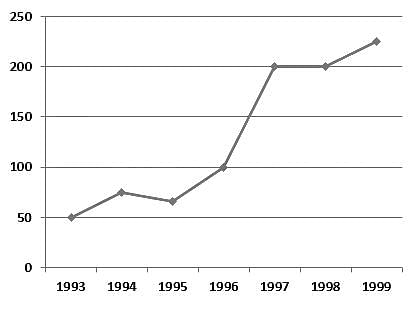MPTET Varg 2 Math Mock Test - 7 - MPTET MCQ
30 Questions MCQ Test - MPTET Varg 2 Math Mock Test - 7
कवि ने हार और जीत के माध्यम से क्या बताने का प्रयास किया है?
| 1 Crore+ students have signed up on EduRev. Have you? Download the App |
Choose the correct form of modal auxiliary verb for the given sentence:
Internet _______ provide information on any topic with the click of a mouse.
A detective tries to solve a case by putting various pieces of information together and then concludes. Name the type of thinking he uses?
Direction : Study the following graph and answer the questions.
The Graph shows the Human Resource Index of an organization for the given years .

What is the ratio of index in year 1997 to year 1996 ?
Which approach is mainly used in teaching of Algebra, Geometry and Trigonometry?
Direction : Study the following graph and answer the questions.
The Graph shows the Human Resource Index of an organization for the given years .

The index of 1998 was what percent of that in 1996 ?
The ages of Sonu and Bulla are in the ratio 4 : 3 respectively, and the sum of their ages is 49 years. What will be the ratio of their ages after 4 years?
The roots of the quadratic equation x2 + 15x + 56 = 0 are:
If a + b = 10 and ab = 9, then the value of a - b is:
Directions: The following pie chart shows the expenditure (in percentage) of five companies P, Q, R, S and T in one year 2020.

What was the total expenditure in (Rs Cr) of the company Q, R & T together?
In the following figures, the number of lines of symmetry is

Direction : Study the following graph and answer the questions.
The Graph shows the Human Resource Index of an organization for the given years .

What is the approximate average of the year 1993 , 1994 and 1996 ?
If each edge of a cube is increased by 50%, then increase in its surface area will be
The SI unit of heat energy transferred is expressed in ______.


 = (xy- x)/90
= (xy- x)/90
 = (35 - 3)/90 = 32/90 = 16/45
= (35 - 3)/90 = 32/90 = 16/45






















